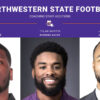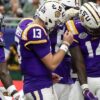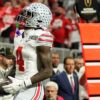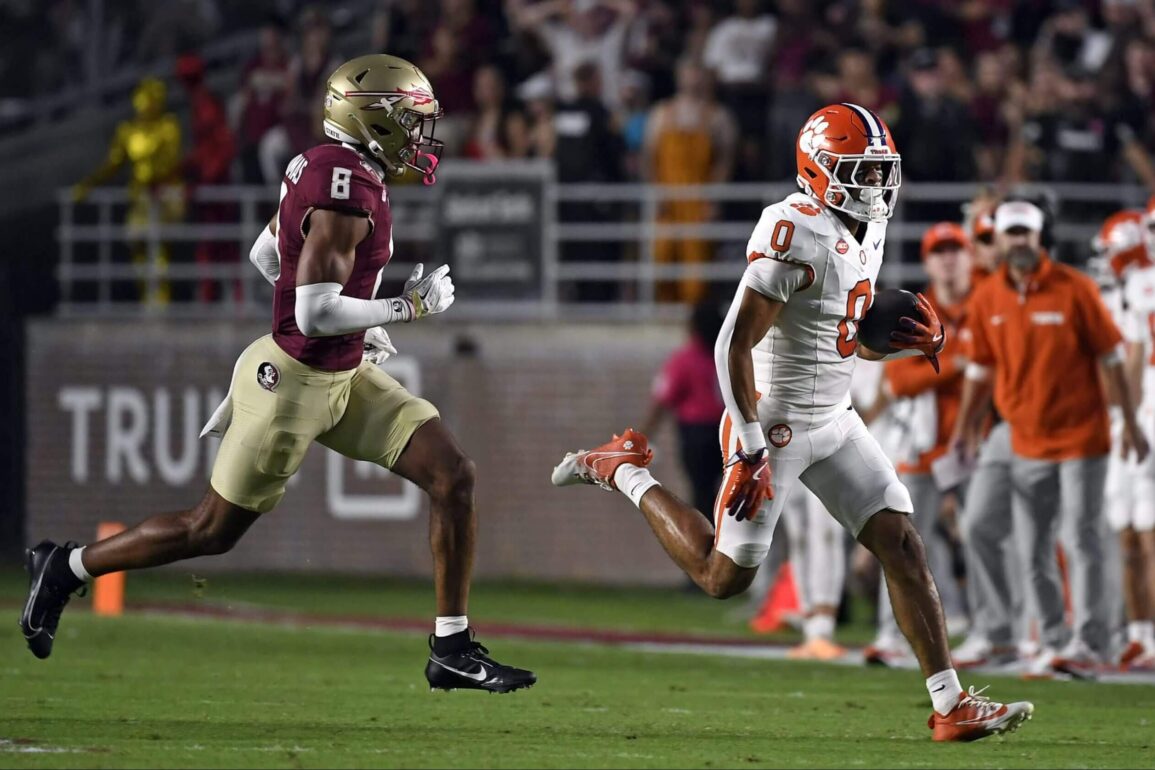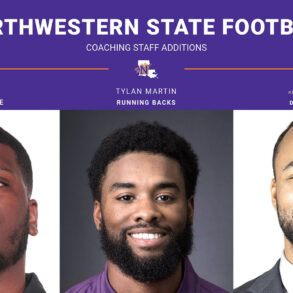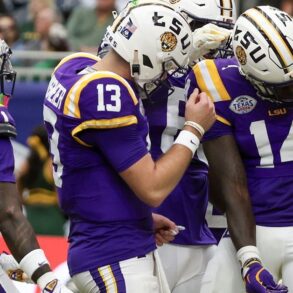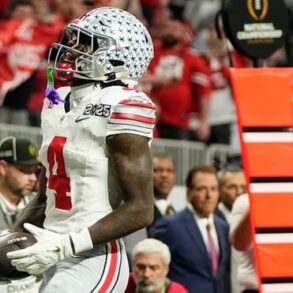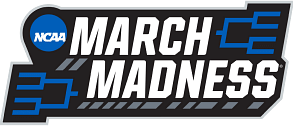I generally prefer nice, concise Mailbag questions, so as to avoid any TLDR situations. But this first one is a perfect dead-of-offseason topic, so I’m making an exception.
Note: Submitted questions have been lightly edited for length and clarity.
In college basketball, there are teams that expect to advance deep into the NCAA Tournament. Others are simply happy to make it at all. If you had to put college football teams into similar tiers based on the expanded Playoff, who would fill each category?
TIER 1: Expects to compete for national titles and isn’t going to celebrate anything less.
TIER 2: Expects to make the CFP on a near-yearly basis and considers a deep run to be a success.
TIER 3: Makes the CFP every five-ish years and considers it a success to win a game or two.
TIER 4: Makes the CFP every 10-ish years and is excited to win even once.
TIER 5: Making the field is a once-in-a-lifetime experience to be celebrated, even if it gets blown out in the process. — Brian S., Buford, Ga.
Tier 1 (3) is tiny: Alabama, Ohio State and Georgia.
Advertisement
Tier 2 (12) comprises more programs than can pull this off, and some haven’t come close any time recently: LSU, Texas, Oklahoma, Florida, Michigan, Oregon, Penn State, USC, Notre Dame, Clemson, Florida State, Miami.
Tier 3 (10): I’m converting this to “every three to five years,” because five is a long time: Ole Miss, Texas A&M, Auburn, Tennessee, Washington, Wisconsin, Michigan State, TCU, Utah, Boise State.
Tier 4 (19): Iowa, Nebraska, Missouri, Arkansas, SMU, Louisville, Virginia Tech, North Carolina, Pitt, Baylor, BYU, Kansas State, Colorado, Cincinnati, UCF, Texas Tech, West Virginia, Oklahoma State, Washington State.
Tier 5: Everyone else, including Indiana, which happened to get its once-in-a-lifetime trip in Year 1.
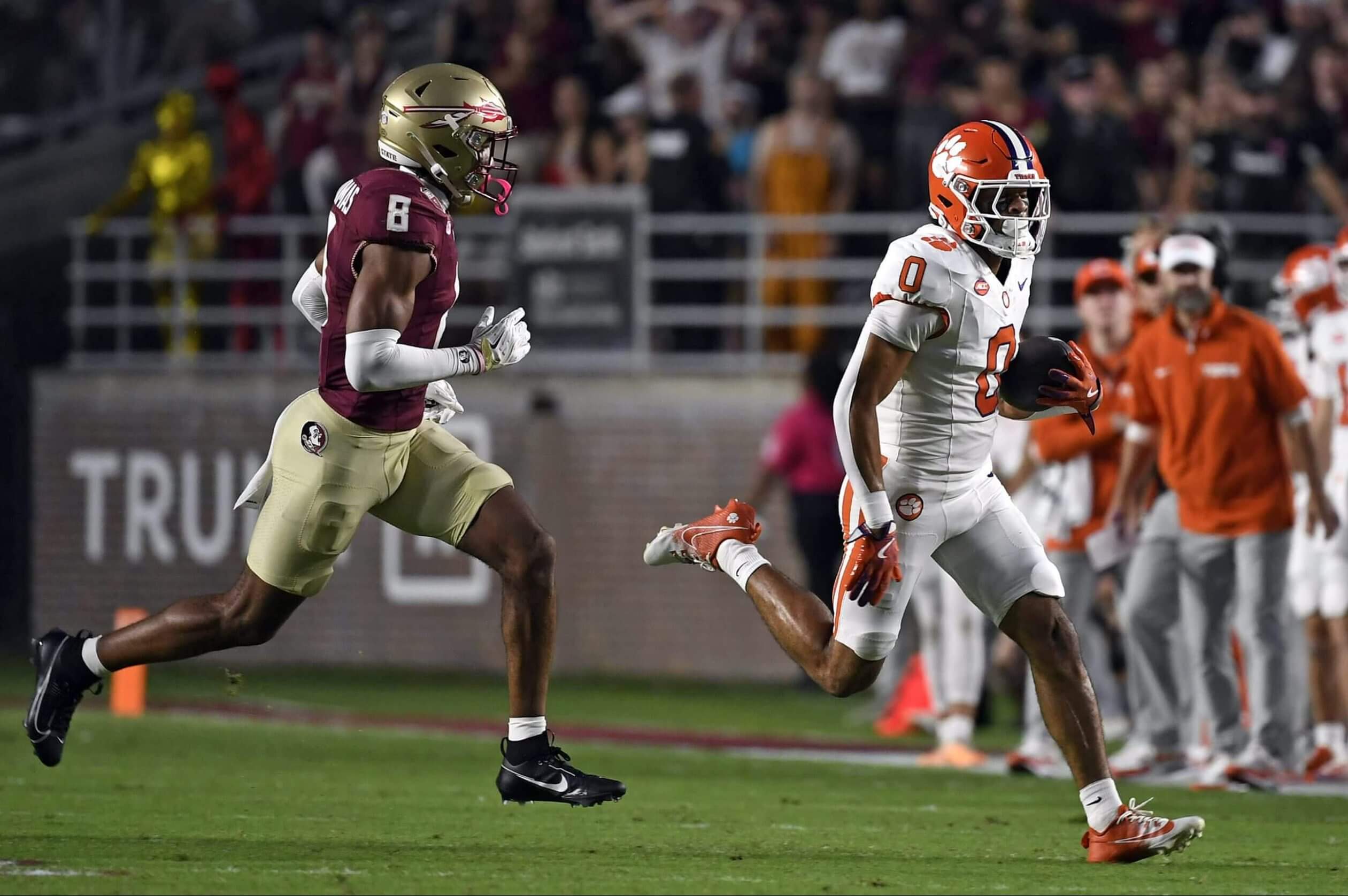
Clemson and Florida State have lawsuits pending against the ACC. (Melina Myers / Imagn Images)
If the ACC and FSU/Clemson reach a lawsuit settlement in which they remain in the conference, what do you think the rest of the terms would look like? — Reggie C., San Diego
It does sound like things are moving in that direction, now that ESPN officially picked up its option to extend its ACC deal through 2036 and with no indication that FSU or Clemson have anywhere else to go.
The ACC this year implemented a performance-driven revenue pot. Notre Dame earned an extra $20 million for reaching the title game, and Clemson and SMU each got $4 million for qualifying. Mind you, the ACC last year distributed $44.8 million per school. Had that been FSU or Clemson receiving $20 million, its total share of ACC revenue on the year would be higher than the SEC’s recently reported $52.5 million for 2023-24.
The problem is that the schools can’t budget based on a number they might not earn. So the question is how much of that $44.8 million are the other ACC schools willing to forfeit to appease FSU/Clemson and get them to drop the lawsuits? And how would the allocation be determined? The idea of rewarding the schools that get better TV ratings seems clunky, given all the uncontrollable factors that help determine those numbers.
Advertisement
The most intriguing tidbit to come out of ACC circles in recent weeks is the idea that the league might intentionally schedule more games between the big-name schools, including which conference opponents Notre Dame draws. AD Pete Bevacqua hinted at this last month when he said he would love to see the Irish play Clemson more frequently.
This feels like a no-brainer. The ACC practically vanished from ABC last season due to a combo of the SEC taking away time slots and the ACC not having a lot of big games. Commissioner Jim Phillips also raised the possibility of converting the conference championship into a pair of semifinals (1 vs. 4, 2 vs. 3) and a title game, which ESPN might just kick in more money to make a reality.
Phillips, in reaction to SMU almost missing the CFP last year, suggested possibly giving his first-place team a bye and playing No. 2 vs. No. 3 in Charlotte. I assume he’s joking. This would be the one scenario where ESPN might demand some money back.
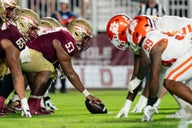
GO DEEPER
What’s happening in the Florida State, Clemson lawsuits with the ACC?
What are some of the best examples of players having horrible performances in CFB title games? I’m trying to find comparisons to Patrick Mahomes’ performance in the Super Bowl.— Craig B., Charlotte, N.C.
It hasn’t happened recently, but there was once a run of Heisman Trophy winners stinking in the BCS Championship Game: Florida State’s Chris Weinke (2000), Oklahoma’s Jason White (2003 and 2004) and Ohio State’s Troy Smith (2006). Heisman runner-up Tua Tagovailoa had a rough night in Alabama’s 44-16 loss to Clemson in 2018, although I’d pin that one on the Tide’s defense. Bryce Young threw a game-sealing pick six in Alabama’s 2021 loss to Georgia but wasn’t bad all night like Mahomes.
Smith feels like the closest comparison since that Ohio State team was considered a juggernaut all season only to gain just 82 total yards (yes, 82) in a 41-14 loss to Florida. The runner-up might be Notre Dame linebacker Manti Te’o against Alabama in 2012. As we later learned, he was understandably distracted.
Advertisement
Is college football in a trough for producing NFL-ready QBs? Everyone projected for the draft this year and next year looks more like Kenny Pickett/Justin Fields/Mitch Trubisky than Jayden Daniels/Joe Burrow/C.J. Stroud. — Mark C.
It feels like these things go in waves. There was an absurd number of NFL QBs playing in college from roughly 2017-19: Lamar Jackson, Baker Mayfield, Kyler Murray, Burrow, Tagovailoa, Josh Allen, Justin Herbert and Jalen Hurts. Then there was a brief drop-off in 2020-21, outside of Trevor Lawrence and, improbably, Brock Purdy. But then we got an amazing 2022-23 with Daniels, Stroud, Bryce Young, Michael Penix, Bo Nix and Caleb Williams (who I’m not giving up on).
The 2024 college season saw a dearth of top-end QBs, as is playing out this draft cycle. I believe you’ll see an upswing in 2025, but, as I said last week, I’d be the last person to tell you who will emerge as the top draft prospects from amongst Oklahoma’s John Mateer, LSU’s Garrett Nussmeier, Clemson’s Cade Klubnik, Penn State’s Drew Allar, Miami’s Carson Beck and the inevitable out-of-nowhere surprise. Or whether that group will be viewed any more favorably than the infamous 2022 class of Pickett, Desmond Ridder, Malik Willis and Matt Corral.
Still, I wouldn’t read much into a two-year dip, knowing the likes of Arch Manning (who I’m assuming will be back to Texas for a fourth season), Florida’s DJ Lagway, South Carolina’s LaNorris Sellers, Duke’s Darian Mensah and players we don’t even know yet will be eligible. History suggests there will be a rebound.
Will we ever talk about the national championship halftime show like we do a Super Bowl? Who are the great entertainers who are CFB fans who should perform? — Forrest S.
Is it bad that the only one I can even remember is Ashlee Simpson at the 2005 USC-Oklahoma Orange Bowl? And that’s solely because she got booed by the entire stadium as soon as she stopped singing. (It’s actually kind of amazing to watch back.)
Apparently, ESPN showed a Travis Scott performance at this year’s game. I figured I would have remembered that given I was *in the stadium* at the time, but there’s a good reason why. He was up on the roof of the stadium.
It’s mostly country acts you see connected to college football, although Snoop Dogg is a big USC fan. Is he current enough? If not, did Chappell Roan (Willard, Mo.) grow up a huge Mizzou fan by any chance? Does Sabrina Carpenter (East Greenville, Pa.) secretly donate to Penn State’s collective?
Probably not. But, Lainey Wilson (Baskin, La.), who you may recognize from the “College GameDay” theme, just won a Grammy for Best Country Album and according to the Internet, “has family members that bleed purple and gold.” She seems like a safer bet to make it to the national title game than Brian Kelly.
Advertisement
Who has leverage when they renegotiate the next Playoff contract? If the SEC and Big Ten make demands on the other conferences, why would the other conferences agree to them? Why would the ACC and Big 12 voluntarily agree to give up first-round byes, etc.? Is the only threat that the SEC and Big Ten would just leave and play each other? — Anonymous
It already happened.
In typically weird CFP fashion, in late 2023, its media consultants reached an agreement in principle with ESPN on a six-year, $7.8 billion extension before the conferences had yet agreed on “any aspects of the format,” as The Athletic reported at the time. Those meetings finally commenced around this time last year, at which point the Big Ten and SEC walked into the room and made a bunch of big asks, some of which got tabled for the time being (14 teams?) but much of which got codified. Those leagues got substantially bigger revenue cuts, but also, they ensured future format changes won’t require unanimity.
The Big Ten and SEC can basically say, this is how we’re doing things now.
So, I will rephrase your question in the past tense: Why did the ACC and Big 12 voluntarily give up control of the CFP? And I think you answered it yourself: the “we’ll take our ball and go home” threat. You cannot have a credible Playoff without the Big Ten and SEC. You just can’t. And most of the sport’s biggest brands are in those two leagues, so an ACC/Big 12/G5 Playoff would net a fraction of the $7.8 billion.
But perhaps those leagues should have called the Power 2’s bluff. While an all-SEC/Big Ten tournament (with perhaps Notre Dame thrown in there) should be valuable in theory, it, too, would have a serious credibility problem. Only 25 percent of the country would be eligible for the national championship, and there are a handful of programs among the other 75 percent (Florida State, Clemson, Miami) that have proven capable of winning one.
You might as well turn back the clock 30 years and have split national champions.
Advertisement
There will be more CFP meetings this spring to discuss potential format changes with the next contract. We’ll find out soon enough how much the Power 2 conferences plan to mold the thing to their benefit.
What is the most impactful assistant coach move so far? — Marianne S.
Defensive coordinator Jim Knowles moving from Ohio State to Penn State has received the most attention, but his impact may be limited due to the Nittany Lions being so good on defense already. I’ll go with offensive coordinator Ben Arbuckle moving from Washington State to Oklahoma and taking Mateer with him.
The Sooners’ 2024 offense could not have been much worse (124th nationally) and raised serious questions about whether head coach Brent Venables, who has two losing seasons in three years, can make it past 2025. But I love what he did to fix it, hiring a coach who just produced a top-10 offense in Pullman (albeit against a watered-down schedule) and who brought with him the nation’s No. 4 quarterback in total offense (behind only Jaxson Dart, Kyle McCord and Cam Ward).
Oklahoma has to improve more than just its quarterback, but the Sooners’ receivers were a season-long MASH unit. Getting back Deion Burks, a big-time playmaker limited to five games last season, will benefit Arbuckle. Venables has a whole lot riding on his new offensive coordinator being able to produce substantial improvement.
My runner-up: new Washington defensive coordinator Ryan Walters, whom Jedd Fisch hired after Steve Belichick joined his dad’s UNC staff. While Walters’ short-lived tenure as Purdue’s head coach was a disaster, he produced the nation’s No. 2 defense at Illinois in 2022 and before that a top-20 unit at Missouri in 2019. The Huskies were a respectable 34th on defense in Fisch’s first season, but most of their starters are gone.
Can you enlighten us on the GM role? What are they doing that someone else is already doing (recruiting)? What are they doing that’s new to a program? What’s it all worth? One million-plus per year? — Kevin K.
Advertisement
It’s a role that’s evolving fairly rapidly, and it’s not necessarily the same from one school to the next. But in essence, it’s not much different than an NFL GM at this point — they’re in charge of roster construction. They’re the salary-cap manager, salary negotiator, recruiting manager and portal evaluator all in one. The recruiting aspects may feel redundant, as most programs already have a player personnel department. But with the additions of the portal and NIL, teams need someone to coordinate all three elements.
Obviously, the head coach still has the final say* in which recruits and portal players the staff should pursue. But the head coach is busy building his staff, fundraising, doing media, planning practices, game-planning and eight million other things. He needs someone he can rely on who is singularly focused on the roster and all that encompasses, from meeting with current players threatening to enter the portal if they don’t get a new name, image and likeness deal to communicating with the collective to identifying which players at other schools may be coming on the market.
(*There is at least one school that now has its GM above the head coach on the org chart: Stanford, where coach Troy Taylor now reports to GM Andrew Luck.)
As for what a good GM is worth — those numbers are quickly increasing. Alabama’s Courtney Morgan, who followed Kalen DeBoer from Washington, was believed to be the highest-paid last year at $825,000, a deal he got last summer after turning down a reported $1 million from USC. Multiple outlets reported that was much the same number Lincoln Riley dangled last month to lure away Chad Bowden from Notre Dame, thus resetting the market again. I’ve not seen a figure for North Carolina’s Mike Lombardi, but surely the former Browns GM did not follow Bill Belichick to Chapel Hill for pennies.
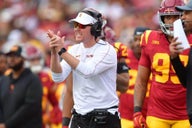
GO DEEPER
USC introduces GM Chad Bowden, 3 new coaches: 10 thoughts on the Trojans’ staff changes
To which I say to all of this: What took so long? This is how college programs should have been structured years ago. All due respect to America’s position coaches, but you don’t have to look far in that profession to find somebody capable of teaching a cornerback how to backpedal. There are far fewer who possess the organizational and management skills to successfully build and retain an 85-man roster.
There is an ongoing investigation into gambling in college basketball. Should we expect football players to similarly be investigated? The players at the top NIL schools presumably would be less likely to be tempted to influence a game. On the other hand, players now have more disposable income to gamble on or against their team. — Tom W., Greensboro N.C.
It would be naive to think this isn’t happening. We’ve already seen two NBA players, Jontay Porter and Terry Rozier, get flagged for allegedly manipulating prop bets, and those players were making more money than 99 percent of college football players. And there are infinitely more potential targets among hundreds of colleges than 30 NBA teams.
Advertisement
The college basketball probe, which reportedly involves the same gambling ring as the NBA ones, involves programs like Eastern Michigan and North Carolina AT&T, where the players are likely making no NIL money and could be tempted by seemingly easy money. It’s going to be devastating if it turns out #MACtion is rigged.
Last year, shortly after the Porter story broke, NCAA president Charlie Baker urged states to ban prop bets on college players. I hope they listen because those seem particularly ripe for manipulation. As of now, I can go online to any number of legitimate sites and get odds on whether star player X will score more than 17.5 points tonight.
It’s not ideal. Like many, I believe it’s better this stuff is legal (in most states) and regulated now than when it was entirely under the table. Point shaving didn’t start in 2018, but it was harder for authorities to snuff out. Today, we’ve already seen numerous instances of the books themselves flagging suspicious behavior. And we surely will see more.
Why are you doing a college football mailbag in February? — Brian S.
Because you are reading a college football mailbag in February.
(Top photo: Jason Mowry / Getty Images)
This post was originally published on this site be sure to check out more of their content.


